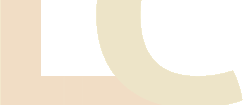News: Rare new Torah made by women debuts Saturday in Seattle
October 14 , 2010
Source: Seattle Times
By: Nancy Bartley
 |
The first known Torah to be written by women is finally complete after almost eight years.
By Nancy Bartley
Seattle Times staff reporter
The sterling silver needle darted into the parchment. The sinew made a raspy whisper as it was pulled through. It was the sound of history being made. Jewish women have never been allowed to create a Torah, or even buy the parchment from the designated factory in Israel. But the Seattle Kadima Reconstructionist has created the first known Torah to be collaboratively written by women from around the world.
Saturday for the first time, the women are to read from it in a sabbath service at Hillel UW. Earlier in the week, the project was coming together as women arrived from Israel, Brazil, Canada and all across the United States. After nearly eight years, and close to $100,000 spent, women and a few men gathered to watch as the 62 panels of parchment were stitched together.
"As a kid you see the Torah and it's a kind of on-high thing," said Wendy Graff, who headed the project. "This has made it much more real."
While over the past few decades women in Reform synagogues have become rabbis and cantors, the prohibition against women becoming scribes is the last barrier. Being a scribe is one of the most important tasks of the religion because it's the only approved way of replicating the Torah — the Jewish scriptures and other sacred writings.
The Kadima, which is less formal than a synagogue and has services led by lay leaders instead of rabbis, had no Torah of its own and for years borrowed one. When the members decided to commission a scribe
to create one, they also thought of rocking Judaic tradition by hiring women. Since there weren't any
female scribes, it meant underwriting the training for two women to go to Israel and be taught by a rabbi.
He agreed to teach them privately with the understanding that his name not be revealed. When word first got out about the project, Graff received international hate mail. But slowly, the idea caught on and other women began finding ways to be trained and later contacted Graff offering to help. Five female scribes wrote the 62 panels of Hebrew for the Women's Torah Project. Among them was Rachel Reichhardt from São Paulo, Brazil. "I grew up as an Orthodox," she said. As a woman, "I couldn't even be close to the Torah." Yet, she learned Hebrew, taught it and knew that one day she wanted to "work with the letters."
She went to rabbinical seminary in Buenos Aires, where she was required to study Hebrew theory alone,
not with the men. In Israel, she found training but no one would teach her to do the most sacred task of all: write the name of God.
There are many Judaic laws governing the creation of a Torah, and scribes can spend a lifetime studying
the laws relating to the calligraphy. Needles must be silver or gold — metals used in warfare are not to
touch the Torah. Scribes are to think only holy thoughts as they work.








